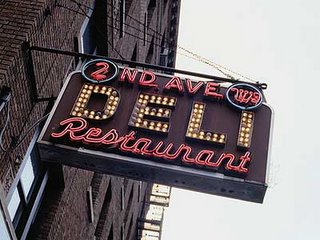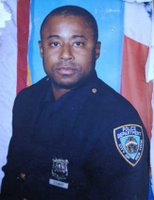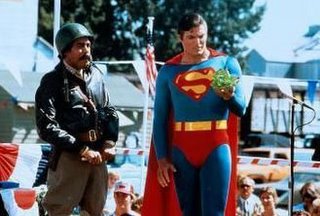WHY not? Because they're handsome and historical columns that speak to the origins of the subway system more than a century ago.
One of the latest uses of the public realm for corporate marketing involves the Times Square shuttle platform. Fourteen of its cylindrical Tuscan-style columns are now in the service of the ABC television show "Emily's Reasons Why Not." They are temporarily wrapped, top to bottom, in orange, purple and black vinyl jackets carrying messages like "Why not? Because it's a felony in some states."
Of course, none of the columns ask why the ads shouldn't be there in the first place.
So it is left to this column to note that CBS Outdoor (formerly Viacom Outdoor), the advertising company that signed a 10-year contract last month with the Metropolitan Transportation Authority, has slathered modern commerce over an architectural feature that can be traced to the earliest days of the Interborough Rapid Transit system in 1904.
Those cylindrical columns define the extent of the original - and surprisingly small - Times Square station. Elsewhere, H-shaped columns mark subsequent expansions.
When the subway opened, a single route ran up the East Side (now the Nos. 4, 5 and 6 lines), turned on 42nd Street to jog crosstown, then turned again to run up the West Side (now the Nos. 1, 2 and 3 lines). Times Square was at a bend in the railroad.
Accordingly, the station itself curved gently. Southbound trains arrived at what is now Track 1 of the shuttle. Northbound trains arrived at Track 4. Because there was no pedestrian deck over the rails, as there is now, travelers wishing to get from one platform to the other used a passageway under the tracks.
You can still find traces of that vanished passageway: small glass cylinders set into the concrete floor to create a skylight for the corridor below. You can find rich floral decoration on the underside of the beams between the columns. You can also find remnants of a rugged arch, almost Roman in its apparent antiquity, with a monumental keystone. This once framed an underground entrance into The New York Times headquarters, which occupied the tower now called 1 Times Square.
The point is, you have to search. No effort has been made to highlight or interpret history. On the other hand, Emily Sanders, a character ABC describes as a "successful career woman who has terrific instincts in every arena of her life but one - relationships," is unavoidable.
And that seemed just fine to Hayley Gorenberg of Park Slope, Brooklyn, who was studying the ads with some bemusement on Tuesday afternoon as she made her way across the platform. "More interesting than a pole," she said.
They may get even more interesting. Larry Levine, the president for displays at CBS, said his company was looking into the possibility of wrapping columns and walls at some stations in CeeLite, flexible sheets of material (technically known as light-emitting capacitors) that glow when electrical current passes through.
CBS Outdoor envisions "cross-track" advertisements; that is, panels placed on the track wall that can be read by passengers standing on the opposite platform. The company foresees screens between columns on which electronic ads could be projected.
"There are ways to come up with new and innovative things that can take the more mundane or boring ride and make it a little more lively," Mr. Levine said.
That does not yet extend to wrapping the outside of subway cars in advertising, which the transportation authority will not allow, though it does include wrapping the insides, just as The New York Times did last month with three shuttle cars that it blanketed with decals to create the impression of being inside a plush Broadway theater.
AS for the vinyl-wrapped columns, Mr. Levine said it was a trial program. "The M.T.A. doesn't want - nor do we want - to overwhelm people," he said.
Tom Kelly, a spokesman for the M.T.A., said the column-wrapping program raises revenue, though neither the authority nor CBS Outdoor furnished a specific dollar amount; creates new space for advertisements without requiring any construction; and does not damage architectural features, since the decals can be easily removed.
But the Municipal Art Society, which has been fighting subway ads since the dawn of the IRT, is unpersuaded. "The M.T.A. should exercise some restraint," said the society president, Kent L. Barwick. "It's not crucial to the financial stability of the transit system that the beauty of the original system be disguised or used as a billboard."
In the long run, it can be argued that the authority is doing far more good than harm to the public realm by incorporating its Arts for Transit program into station rehabilitation projects.
For instance, within view of the "Emily's Reasons" columns is "New York in Transit," a vibrant 2001 mosaic mural by Jacob Lawrence. Nearby is Roy Lichtenstein's astonishing 53-foot-long "Times Square Mural," which was installed in 2002.
These artworks will ornament the station long after Emily is off the air.
Then again, one should never underestimate the endurance of advertising in the subway. At the easternmost end of the shuttle platform is a door that once led directly into the Knickerbocker Hotel at Broadway and 42nd Street.
To this day, a sign over that door still proclaims, "Knickerbocker."
The hotel closed in 1920.
Source: NY Times












